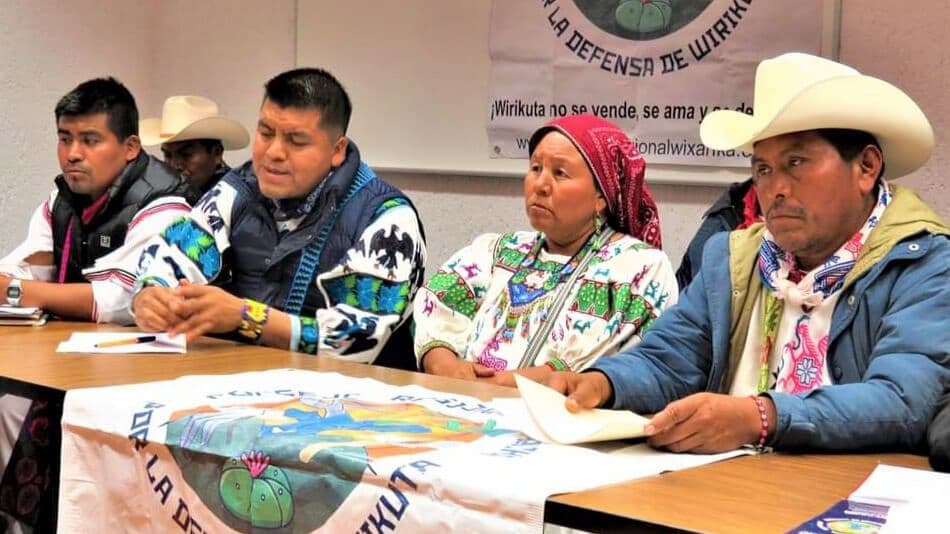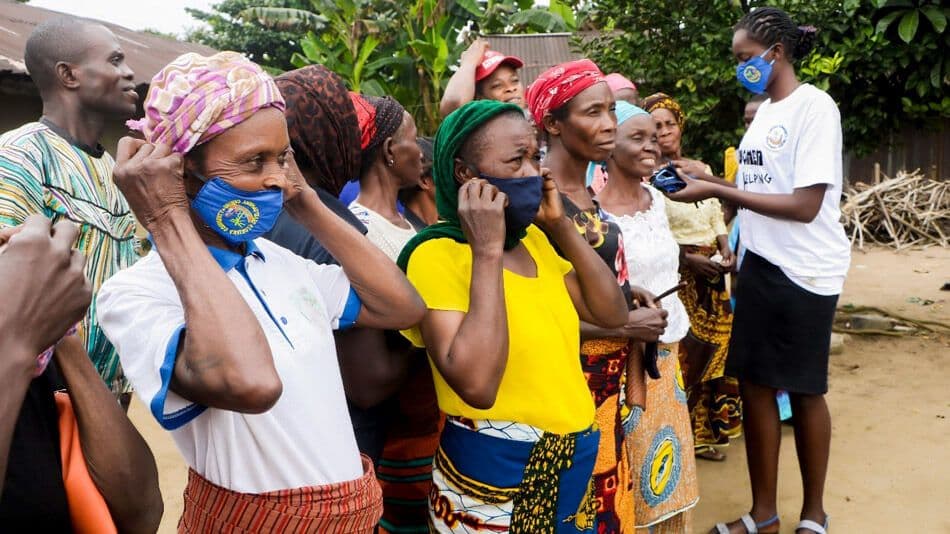Cultural Survival is using an F5 2021 Tech for Good Grant to rebuild its website as it strengthens its advocacy for Indigenous cultures around the globe.
In 1972, four Harvard anthropologists started the nonprofit organization Cultural Survival after witnessing how outside mining companies were threatening Indigenous cultures in the Amazonian region of Brazil and the biodiversity of the lands they have lived on for centuries.
Nearly 50 years later, Cultural Survival has expanded to serve Indigenous communities in more than 70 countries—partnering with Indigenous Peoples to advocate for their rights to practice their cultures, speak their native languages, and control and sustainably manage their land.
Today, 6.2 percent of the global population is Indigenous. Altogether, there are nearly 500 million Indigenous Peoples belonging to nearly 5,000 groups in 90 countries around the world.
But while their right to self-determination is protected by government treaties and international declarations such as the United Nations Declaration on the Rights of Indigenous Peoples, governments and corporations engaged in extractive industries too often operate in their territories without their consent. Unfortunately, many of these communities lack the financial resources and communication mechanisms needed to raise awareness and ensure their rights are protected.
Amplifying Indigenous Voices
Over the last half century, Cultural Survival has partnered with Indigenous Peoples as they work to defend their human rights—using multiple avenues to protect Indigenous communities’ sovereignty and self--determination. The nonprofit, which is largely run by Indigenous Peoples, documents human rights violations, advocates for Indigenous communities at international forums such as the United Nations, and issues reports summarizing the commitment of individual countries to protecting Indigenous rights.
Cultural Survival works with media producers who amplify Indigenous voices on issues that matter to their communities. It hosts an Indigenous Rights Radio program, using the power of community radio to inform and exercise Indigenous Peoples’ rights to freedom of expression. It organizes bazaars to showcase the art of Indigenous artists and educate the public about the struggles Indigenous Peoples face. And it awards grants to strengthen the broadcast infrastructure of Indigenous radio stations and provide training opportunities for community journalists.

Cultural Survival Grantee Consejo Regional Wixárika, Mexico
Preserving Indigenous Cultures
Together, these efforts increase awareness about Indigenous cultures and the struggles they face to maintain their land and their ways of life.
For example, Cultural Survival is elevating the work of Donatila Girón Calix, leader of the Lenca Indigenous Movement of La Paz, Honduras, who is working to defend the environment and human rights of the Lenca people in Honduras. Calix has fought against hydroelectric dams that extract river water for energy, while leaving many people without water. She has also helped to prevent logging companies from cutting down forests on Indigenous land.
“For us, some of the fundamental parts of being Indigenous are our way of taking care of water, our way of seeing the forest and our territory, our way of coexisting in harmony with nature,” she says. “Our water, forest, and territory are non-negotiable because they are parts of a whole, a path of learning, a way of life, an entire cosmos.”
Cultural Survival is also raising awareness about the work of Philip Kujur, a Kudukh tribesman and activist who is spearheading efforts to protect the rights of Indigenous Peoples in Jharkhand, India. Kujur has been working to protect the forest economy of Indigenous Peoples from industries intent on logging these areas for their own development projects.
“Not only are Indigenous Peoples being massively displaced from their natural homes, but thousands of square kilometers of primary forests are being ravaged as well,” says Kujur. “That is why we consider our fight to protect our forests, water, and land inherited from our ancestors no different from our fight to protect our identity and existence.”

Cultural Survival Grantee Lokiaka Community Development Centre, Nigeria
““Ultimately, we want to inspire people to learn more so they increase their commitment to Indigenous cultures.” ”
A Global Information Hub for Indigenous Issues
A key part of the Cultural Survival platform is its website, which helps to raise awareness about Indigenous issues. The website, which includes 10,000 pages of information and attracts 3 million visitors annually, is used to gather donations, advertise grant opportunities, and provide a global information hub about issues affecting Indigenous Peoples.
“We’re one of the few global organizations that is bringing news and information about what’s happening on the ground,” says Daisee Francour, Cultural Survival’s Director of Strategic Partnerships and Communications. “Oftentimes, when you hear news about Indigenous Peoples, it’s not written or communicated by us. We’re one of the very few organizations that is bringing this news to light through our own worldview.”
Revamping Its Website to Strengthen Outreach
With the current grant support for its website platform ending, Cultural Survival wanted to ensure the future security of its website, while making it faster, easier to use, and accessible to Spanish speakers. It also wanted to improve mobile device access—the form of access most often used by Indigenous Peoples in rural areas.
To revamp its website, Cultural Survival obtained a $10,000 USD F5 Tech for Good Grant, which it is using to hire the technical support it needs to make these changes. Part of this grant will go to the design of a new website by the Indigenous design firm, Animiki.
“By making our website more visually attractive and user-friendly, more people will be encouraged to learn about our work,” says Francour. “People come to our website with different levels of understanding—and ultimately we want to inspire them to learn more, so they increase their commitment to Indigenous cultures.”
Technology Is a Key Ally
Over the past year-and-a-half, Cultural Survival has embarked on a strategic planning process to ensure it continues to meet the needs of Indigenous communities. As part of this effort, it is planning to form deeper relationships with the communities it serves. If the nonprofit is working with a community on land issues, for example, it will also dedicate resources to climate change, language revitalization, advocacy building, and community media to support the community in a more holistic way.
As Cultural Survival charts its future path, Francour says technology will continue to be a key ally. “Technology enables Indigenous communities in different parts of the world to exchange ideas and mobilize resources,” she says. “It’s also an important tool as we continue to amplify voices and raise awareness about the rights of Indigenous Peoples to self-determination.”
About F5 Tech for Good
At F5, we are committed to extending our purpose, reach, and connections beyond the walls of our own company by using our expertise to support nonprofit organizations with their digital transformation efforts. Our Tech for Good Grants help nonprofits update their technological resources, making it possible for them to streamline administrative efforts, improve data security, and—most importantly—expedite their missions so they can do even more to help those they serve.
Want to be notified when applications open for F5’s 2022 Tech for Good Grants? Sign up here to be added to the email list.
To learn more, see our previous blog posts, "Using Tech for Social Good", "Helping New Mothers Stay Connected During the COVID-10 Pandemic,” and “Breaking Down the Barriers to Girls’ Education in Peru.”
About the Author
Related Blog Posts

F5 accelerates and secures AI inference at scale with NVIDIA Cloud Partner reference architecture
F5’s inclusion within the NVIDIA Cloud Partner (NCP) reference architecture enables secure, high-performance AI infrastructure that scales efficiently to support advanced AI workloads.
F5 Silverline Mitigates Record-Breaking DDoS Attacks
Malicious attacks are increasing in scale and complexity, threatening to overwhelm and breach the internal resources of businesses globally. Often, these attacks combine high-volume traffic with stealthy, low-and-slow, application-targeted attack techniques, powered by either automated botnets or human-driven tools.
F5 Silverline: Our Data Centers are your Data Centers
Customers count on F5 Silverline Managed Security Services to secure their digital assets, and in order for us to deliver a highly dependable service at global scale we host our infrastructure in the most reliable and well-connected locations in the world. And when F5 needs reliable and well-connected locations, we turn to Equinix, a leading provider of digital infrastructure.
Volterra and the Power of the Distributed Cloud (Video)
How can organizations fully harness the power of multi-cloud and edge computing? VPs Mark Weiner and James Feger join the DevCentral team for a video discussion on how F5 and Volterra can help.
Phishing Attacks Soar 220% During COVID-19 Peak as Cybercriminal Opportunism Intensifies
David Warburton, author of the F5 Labs 2020 Phishing and Fraud Report, describes how fraudsters are adapting to the pandemic and maps out the trends ahead in this video, with summary comments.
The Internet of (Increasingly Scary) Things
There is a lot of FUD (Fear, Uncertainty, and Doubt) that gets attached to any emerging technology trend, particularly when it involves vast legions of consumers eager to participate. And while it’s easy enough to shrug off the paranoia that bots...